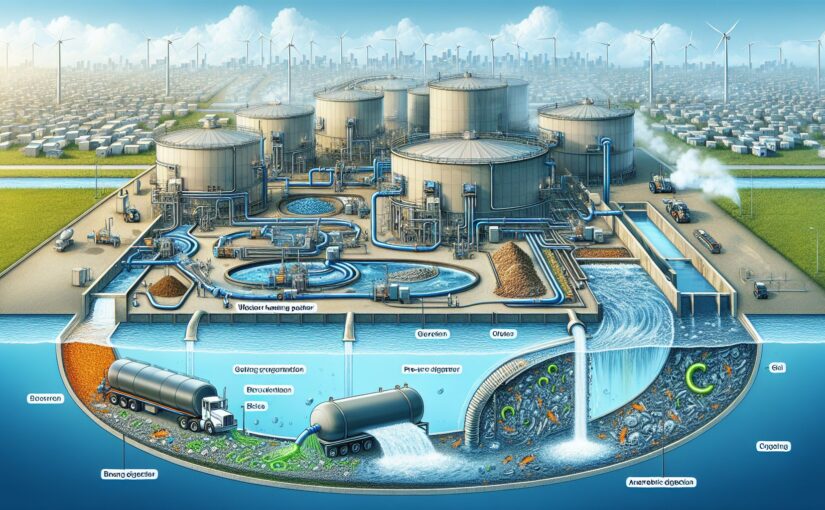In this modern era of technology and rapidly depleting fossil reserves, we are constantly seeking newer sustainable sources to generate energy. One such innovative approach is harnessing the potential of wastewater, a resource produced in overwhelming volume every day. This article unearths how renewable energy can be produced from wastewater, showcasing a potential solution to two global crises—waste management and energy scarcity.
Power Potential of Wastewater
Wastewater is any water affected by human use, heavily laden with organic matter, and considered unfit for direct use without treatment. The common perspective towards wastewater is that it’s a waste product requiring disposal, often neglecting its potential as an energy source.
Every day, quoting from an article in Nature, around 330 billion liters of wastewater are treated in Europe alone—an amount brimming with organic matter that could theoretically generate up to 600-700 GWh of electricity.[^1^]. This enormous quantity of energy could power hundreds of thousands of homes, envisioning wastewater’s potential in reshaping the energy landscape.
Microbial Fuel Cells: Path to Bioenergy
The key to harnessing wastewater’s power potential lies in so-called microbial fuel cells (MFCs). As per a report in the Journal of Cleaner Production, MFCs convert chemical energy to electrical energy via microbial activity, wherein microorganisms oxidize organic matter in the wastewater under anaerobic conditions[^2^].
The process not only garners electricity but also aids in treating wastewater—a dual benefit that seems like a boon in addressing both energy crunch and waste management.
Overcoming the Hurdles
Despite the promising potential, the practical implementation of using renewable energy from wastewater is still in infancy, primarily due to system inefficiencies, low power densities, limitations in scaling up, and high costs.
However, various advancements are being made to overcome these challenges. One instance, as reported by Global Water Intelligence, is the development of mixed-metal oxide coated titanium anodes to enhance system efficiency and scale-up possibilities[^3^].
In Conclusion
Leveraging wastewater for energy production offers a promising avenue to harness an existing waste product while generating renewable energy. Achieving this prospect requires concerted efforts in advancing supportive technologies, streamlined regulatory frameworks, and collaborative initiatives among researchers, industries, and policymakers.
Renewable energy from wastewater could be a potential game-changer in the sustainable energy mix, bestowing a promising path for a cleaner and greener environment.
Sources:
[^1^]: “Power to the microbes: electrodialysis opens up options for bioprocess engineering in wastewater treatment“. Nature Reviews. https://www.nature.com/articles/s41579-018-0114-2
[^2^]: “Review on the application of modified iron oxides as heterogeneous catalysts in Fenton reactions“. Journal of Cleaner Production. https://www.sciencedirect.com/science/article/abs/pii/S0959652619332141
[^3^]: “Winning Wastewater Projects – February 2019“. Global Water Intelligence. https://www.globalwaterintel.com/global-water-intelligence-magazine/20/2/general/winning-wastewater-projects-february-2019
